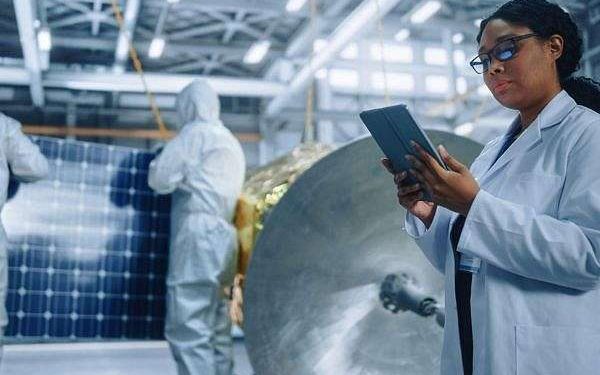Space-Based Solar Power for Earth’s Energy Needs
by Sophie Jenkins
London, UK (SPX) Nov 04, 2024
As the world grapples with an ever-growing demand for energy, the need for clean and sustainable solutions becomes increasingly urgent. Fossil fuels, the traditional energy workhorse, are no longer a viable long-term option. But what if the answer lies not on Earth, but beyond it?
Space-based solar power (SBSP) emerges as a revolutionary concept, promising to harness the limitless energy of the sun and beam it down to our planet, potentially revolutionizing the way we power our lives. This article delves into the world of SBSP, exploring its potential, the challenges it faces, and whether it can truly illuminate a brighter energy future for Earth.
How does space-based solar power work?
Space-based solar power (SBSP) aims to capture the sun’s energy in space and transmit it wirelessly to Earth for electricity. Unlike traditional solar panels on rooftops, SBSP satellites would reside in orbit, constantly bathed in uninterrupted sunlight. These satellites would house massive solar panels, or perhaps giant mirrors concentrating sunlight onto smaller collectors.
The collected energy is then converted into a form suitable for transmission over long distances. Microwaves are a leading candidate, as they efficiently travel through the atmosphere. The converted energy is beamed down to Earth in a tightly focused stream towards large receiving stations called rectennas. These rectennas capture the microwave beam and convert it back into electricity that can be fed into the power grid.
Calculating the needs: Powering our planet from space
One of the biggest hurdles in developing a functional space-based solar power (SBSP) system lies in determining the sheer number of solar panels needed in space to meet our energy demands here on Earth. It’s not as simple as scaling up a rooftop solar array. To calculate how many solar panels you will need for your project, a complex interplay of factors must be considered.
Firstly, the energy demands on Earth are vast and constantly evolving. Population growth and technological advancements influence our overall energy consumption. Secondly, beaming energy down from space encounters losses during transmission. The efficiency of converting and transmitting the captured solar energy plays a crucial role. Finally, the design of the SBSP system itself, including the size and orbit of the solar panels and the receiving stations on Earth, significantly impacts the number of panels required. For example, a system designed to power a single city will have vastly different needs than one aiming to supply an entire continent.
Engineers tackling this challenge would likely employ sophisticated computer models that factor in geographical location and population energy needs. These models would account for variations in sunlight throughout the year depending on location, along with local energy consumption patterns. By factoring in these complexities, engineers can estimate the optimal number of solar panels needed in the SBSP system to deliver the desired energy output and ensure a reliable and sustainable power source for our planet.
The benefits of SBSP: A brighter future?
Space-based solar power (SBSP) offers a glimpse into a future powered by clean and constant energy. As previously mentioned, SBSP systems would be positioned in orbit, constantly bathed in sunlight. This eliminates the limitations of day/night cycles and unpredictable weather patterns. Imagine a world where energy production is uninterrupted, capable of meeting a significant portion of the Earth’s needs. This continuous and reliable source of power would be a game-changer, paving the way for a more stable and secure energy grid.
Moreover, SBSP boasts significant environmental advantages. By generating clean energy from the sun, our dependence on fossil fuels would diminish dramatically. This translates to a drastic reduction in greenhouse gas emissions, a critical step in combating climate change. SBSP has the potential to be a key player in our transition to a sustainable future, ensuring a cleaner and healthier planet for generations to come.
Challenges and Considerations: A Reality Check
While SBSP presents a captivating vision, significant challenges must be addressed before it becomes a reality. The initial investment costs for building and launching this large-scale space infrastructure are astronomical. Developing the complex technology for efficient energy conversion, wireless transmission, and safe reception on Earth requires substantial breakthroughs.
Furthermore, the environmental impact of beaming energy down through the atmosphere with microwaves or lasers needs thorough investigation. Potential concerns include disruptions to bird migration patterns or unintended consequences on weather systems.
The sheer scale of SBSP projects raises questions about feasibility. Can we manage the logistics of constructing and maintaining these massive structures in space? Will the energy lost during transmission negate the benefits of continuous solar collection? These are crucial questions that require in-depth research and international collaboration before SBSP can become a viable solution to our energy demands.
Conclusion: A vision for a sustainable future
While the technical hurdles of space-based solar power (SBSP) are significant, the potential benefits are equally vast. To turn this concept into a reality, international collaboration is paramount. Sharing knowledge, resources, and expertise across borders will be crucial in overcoming the challenges of building, launching, and maintaining the complex infrastructure required for SBSP.
Imagine a future where a network of space-based solar panels beams clean energy back to Earth, fulfilling our needs without the environmental impact of traditional sources. The path may not be easy, but ongoing research and development, coupled with international cooperation, offer a glimpse of a brighter tomorrow powered by the limitless energy of the sun.
Related Links
Greenmatch
Space Tourism, Space Transport and Space Exploration News


















